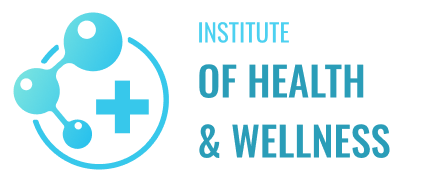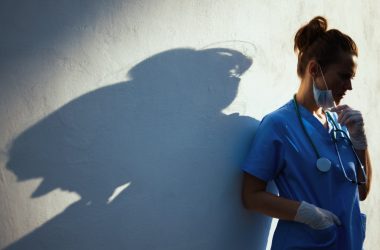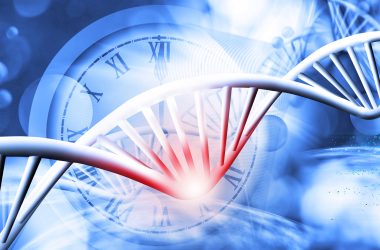Health
Warning for younger women: Be vigilant on breast cancer risk
Pathologist explains the latest report from the American Cancer Society
Breast cancer rates rose by 1 percent a year from 2012-2021 for all American women combined, but steeper increases were seen for women under 50 and Asian American and Pacific Islander women, according to the American Cancer Society, which released its biennial report earlier this month on the state of the disease in the nation.
Breast cancer is the second leading cause of cancer death in women, second only to lung cancer. Overall mortality rates, however, have fallen by 44 percent since 1989 because of advances in treatment and earlier detection.
But the new figures also show there remain significant racial and ethnic disparities. There has, for instance, been no change in mortality rates for Native American women over the past 30 years. And Black women have a 5 percent lower incidence rate than white women but are 38 percent more likely to die from the disease, a trend of divergence that began after 1980.
Laura Collins, a physician who specializes in breast pathology at Beth Israel Deaconess Medical Center and a professor at Harvard Medical School, spoke to the Gazette about the report and its findings. This interview has been edited for length and clarity.
Did anything in the latest report surprise you?
The piece of the report that caught the headlines was the increasing incidence found for breast cancer in young women. It was interesting to see that data captured in this report. Certainly anecdotally, we’ve been diagnosing breast cancer in younger women in the patient case mix coming through our practice. So in some ways it wasn’t surprising, but in others, it was a surprise to see it documented in this important paper from the American Cancer Society.
“We were seeing a decline in incidence in the 2000s, but we are now seeing a slow rise again, with that increase more dramatically present in younger women.”
Laura Collins
Do we have a sense of why that is?
People have many thoughts about this. Certainly there are changes in lifestyle that could impact the incidence of breast cancer, things like deferring childbearing to later in life, increasing obesity rates, people are walking and moving about less — we know that exercise is protective for many types of cancers, but certainly for breast cancer.
And then there are other environmental factors that we’re less certain about, and those need to be investigated further. The recent concern that people are thinking about is microplastics. These chemicals are everywhere, and it’s been found that we are ingesting them too. And so we need to figure out what harm they do and how we can avoid them.
While rates for younger women are on the rise, it looks like the overall rate of increase in breast cancer cases remains fairly stable. Have we made progress, or should we be worried?
Breast cancer is still one of the leading cancers amongst women and causes of death from cancer amongst women, but certainly with the introduction of widespread screening mammography we have increased detection at earlier stages.
We did see a decline in breast cancer rates because of improvements in diagnosis, treatment, and better understanding of the different types of breast cancers that women get. We’ve seen a decline in the mortality rate. We were seeing a decline in incidence in the 2000s, but we are now seeing a slow rise again, with that increase more dramatically present in younger women.
Are there other demographics of women who are more at risk than others?
It was outlined in the report the different populations for whom the increases are more marked, with the caveat that the ethnicities may not be as accurately captured as one would like.
There are differences in rates between white, Black, Asian, and Pacific Islander women, attributed in part to ongoing issues of systemic racism and access to care. For example, Black women often present at a higher stage, as well, we see biologically more aggressive cancers in that population.
Additionally, depending on where a person lives and their ability to access care, it can be a factor in the stage at which a woman’s breast cancer is detected. These are challenges that we need to figure out and resolve to create equity of care for all.
For young women who develop breast cancer, what are some additional challenges they face with their diagnoses and care?
Because we think of breast cancer as a cancer of older women and postmenopausal women, when young women present with a breast mass there’s a tendency to think that it’s something benign and very unlikely to be cancer. And often that is the case — it is much more likely to be a benign rather than malignant tumor.
But what this report tells us is that we can’t ignore these things. We can’t have this assumption that there’s nothing to worry about in younger women. The report should be a consciousness-raising issue, that we need to make sure that if a young woman presents with an abnormality there is prompt follow-up with necessary steps, whether it’s with imaging studies or a biopsy so there can be pathologic confirmation that either it’s benign or malignant.
And if it’s malignant, that the patient can be referred promptly for appropriate care. It’s important we don’t delay treatment.
What advice would you give to younger women when it comes to breast cancer awareness and how they might begin to advocate for themselves?
The U.S. Preventative Services Task Force lowered the age for biennial screening from 50 to 40 years of age. If you’re younger than 40, knowing if you have a family history of breast cancer is important because you may have an increased genetic predisposition to cancer. That would be a conversation to have with your healthcare provider.
And then knowing other risk factors, like if you’re having children later in life, your exercise levels, weight, things like that are factors for you and your healthcare provider to consider in guiding screening. If you feel an abnormality in your breast, make sure you speak to your healthcare provider about it. Because we are seeing increased breast cancer in younger women, it is important to advocate for yourself to ensure further examination or work-up is not delayed.
What gives you hope that we will continue to improve our capacity and ability to detect and reduce occurrences of breast cancer?
There’s a lot of work going on in the arena of breast cancer research. I know that the Harvard hospitals have a strong commitment to taking care of young women with breast cancer. I think there’s a big effort to understand the differences in the biology of breast cancer occurring in young women compared to cancers that occur in older women. That exploration and research is important to understanding how best to treat women with breast cancer.
Additionally, there are many different psychosocial factors that impact young women with breast cancer compared to older women, such as impacts on career, fertility concerns, or coping with cancer treatments whilst caring for young children, so attending to those issues is important and there’s lots of work going on in those areas as well.





